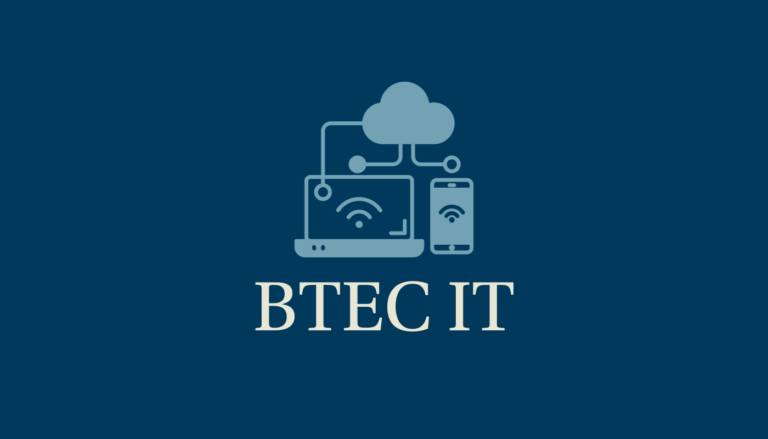AAQ (new BTEC) IT

AAQ (new BTEC) IT is a broad and varied course that offers a range of opportunities for students to develop an understanding of Information Technology and it’s uses in the business environment. The course is composed of both internally assessed units (coursework) and externally assessed units (examination) in both Year 12 and Year 13.
Students have many opportunities outside of the classroom to develop links with local businesses and professionals, this is vital in strengthening understanding the course content while developing and enhancing your CV.
Students are encouraged to expand their own learning by taking part in a variety of online courses, with students in the past gaining certificates in Digital Marketing from Google Garage and Artificial Intelligence from the University of Helsinki.
Many Information Technology students go on to study Information Technology related courses in Higher Education. However, the course has been developed in conjunction with leading businesses and universities in order to deliver the skills and knowledge required by employers and we have many students who have secured places of apprenticeship schemes including Bentley, Barclays and ATOS.
*subject to confirmation of examination board
Unit 1 Information Technology Systems
Information technology systems, including the relationship between software and hardware, and the issues related to IT systems.
Students will explore the relationships between the hardware and software that form an IT system, how systems work individually and together, and the relationship between the user and the system. Students will examine issues related to the use of IT systems and the impact that they have on organisations and individuals.
Unit 2 Cyber Security and Incident Management
Types of cyber security attacks, the vulnerabilities in networked systems and how to plan and respond to attacks
In this unit, students will examine the many types of cyber security attacks, the vulnerabilities in networked systems and the techniques that can be used to defend an organisation’s networked systems. Students will examine scenarios and explain appropriate protection measures for networked systems. Students will also look at the forensic methods used to investigate cyber security incidents and analyse the suitability of those methods for a given scenario. As IT systems evolve, there is an increasing need for IT professionals to protect networked systems and the information they contain, while providing enhanced features and benefits for organisations, customers and individuals.
Unit 3 Website Development
The development tools, techniques and processes used in website development and how to test usability, functionality and fitness for purpose
In this unit, students will explore how existing websites use the principles of website development to appeal to their intended audience and meet their specific purpose. Students will plan, design and develop a website in response to a client brief by applying website development tools, techniques and processes. Students will also reflect on the usability, functionality and fitness for purpose of the website using a testing and review process.
Unit 4 Relational Database Development
Structure of data, data design and database management systems (DBMS).
In this unit, students will examine the structure of data and how an efficient data design follows through into an effective, useful database. Students will investigate database management systems (DBMS) and apply practical skills in designing and developing a database within a given DBMS.
The Pearson BTEC Level 3 National Extended Certificate in Information Technology (AAQ) is an Alternative Academic Qualification (AAQ) designed for post-16 students with an interest in the Digital sector and aiming to progress to higher education or a related apprenticeship. Equivalent to one A level in size, it is suitable for students looking to develop their applied knowledge and skills in Information Technology as part of a study programme alongside A levels.
Find and identify a business that has used Social Media advertising, this could be via Facebook, Instagram, Twitter, Snapchat or YouTube and answer the following:
• What company was the campaign for?
• What was the campaign advertising?
• What social media platforms were used?
• What features did the campaign have? (Examples could be viral video or a hash tag on Twitter)
• Comment on whether, in your opinion, the campaign was successful.
• Describe at least one improvement you would make to the campaign.
Present your findings using any format you prefer, for example, you could write an essay, design a poster or create a leaflet discussing the campaign that you have researched.
Study Level
AAQ (new BTEC)
Exam Board
Pearson
*to be confirmed November 2024
Contact Details
Mrs C Hillier
Head of Department
hillier_c@sjd.ac.uk
